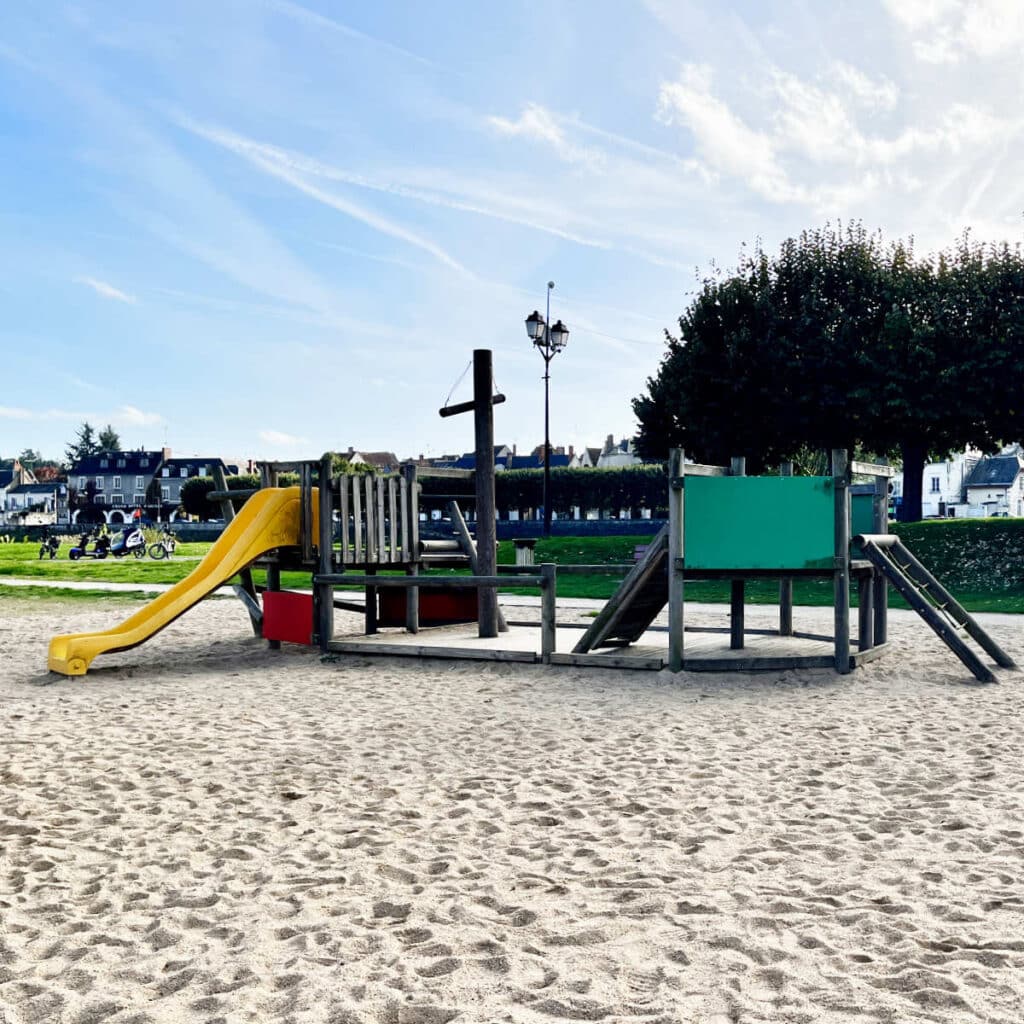For families in France and all around the world, finding good daycare for your young child is one of the most complicated and stressful decisions that new parents have to make. Just who are you going to leave your sweet little baby with?
For parents in France, there is generally no slam-dunk option. If you are moving to France, you should know that childcare here can be complicated, depending on if you get a spot at one of the highly-sought after daycare nurseries (crèche), or if you need a nanny for more flexibility.
So let’s look at what are the different French childcare options, shall we? Allons-y!
French Crèche (daycare nursery)
State subsidized daycare (créche) is the holy grail for most new parents in France, because of its high standards and affordable cost.
The price is based on an income scale (by town), with the maximum being around €2.50/ hour. On average for a 40hour week, the monthly cost is around €800 euros for high-income earners. At the low end, the price can be as low as €50-100/ month.

Drop-off and pick-up times are fixed, and parents are discouraged from being late. This can be a problem, because especially in the Paris area, most office workers tend to leave work late, around 18h30-19h if not later.
The childminders are certified professionals and monitored by the local mairie as well as government agencies. The standard is 1 adult for 5 babies who don’t walk, and 1 adult for 8 children who walk. There is also usually a full-time nurse on staff at the crèche, as well as a rotating pediatrician and a psychologist who monitor the babies and their care on a regular basis.
The children’s weight and progress is actively monitored, and meals provided based on governmental guidance. Meals follow strict preparation standards, and there is usually a full-time cook on staff at the crèche.
If you don’t get a spot in a public crèche, you can see if your office offers access to a private crèche. There are a host of private crèches in big cities like Paris that are subsidized by nearby employers.
While some private crèches can be significantly more expensive, certain other ones end up being the same price as a public crèche. Public or private, they all follow more or less the same standards. There are usually three sections in a crèche, based on age:
1. Bébé Section
Bébé section is for babies starting 3-4 months old. Maternity leave in France is usually 16 weeks, so this is falls into line with that.
A child minder (and a backup) is assigned to each baby, who is available for all important details to be communicated. Most crèches will be accommodate pumped milk, although lactation is not quite as widespread in France after 4 months old, as it is in some other countries.
The babies are entertained with nursery rhymes and lullabies, and a wide assortment of toys. All children nap in beds assigned to them with their favorite toy, while a minder stays in the room at a distance.
2. Moyenne Section
Just as older children do, the babies “graduate” to the Moyenne Section in September. At this age they can usually walk, and so the crèche will usually have a garden or playground attached to it.
The children will get appropriate playtime outside in good weather, as well as stories read to them, and the start of all sorts of activities like painting, playdough, etc.
There are usually also small indoor slides and mats around to encourage motricity.
Moyenne section children start to nap at the same time as their classmates, as opposed to at their own schedule. Sometimes they are not in cribs with bars, but on mattresses on the ground, so that they can get in and out montessori-style.
The child may have a different childminder assigned to them for the year, rather than the same one from the bébé section, but the the children do quickly get used it.
3. Grande Section
Grande section in nursery is a continuation of Moyenne section, with even more activities proposed, songs sung, and stories read. Depending on the crèche, things such as a trip to the local library, or music and English classes might be offered.
One of the disadvantages of a crèche compared to a nanny, is that the crèche will not attempt to potty-train the child. If the child is already potty-trained (which is necessary for entry into French preschools at 3), the crèche will continue it. However, they will not be the ones taking the lead on the matter.
All children must go to preschool in the year they turn 3, so the child will automatically “graduate out” in the following September to make space for a new cohort of babies.

Getting a Nanny
If you do not get a spot in créche, you will have to look into alternative childcare. There are three main types of nanny childcare available to parents in France. We can go through each type, and then compare the three options:
1. Assistante Maternelle
The assistante maternelle, known colloquially as the “assmat”, is a certified professional who takes care of a group of 5-6 children at a time, in her home. (They are majoritarily female.)
Child care in the home of the childminder can be an advantage or a disadvantage. If you don’t want toys all over your own space, and/or work from home, having the children at the assmat’s residence is an advantage. In addition, her space is more likely to be childproofed.
This does however require parents to travel and be on time for drop-off and pickup. Just like at the crèche, drop-off and pick-up times are fixed, and parents are discouraged from being late.
The assmat will usually have children of different ages from several families. In Paris, you can often see assmats pushing a double-stroller with babies inside, while little 2 year-olds walk alongside to the local park.
Assistante maternelles are highly regulated by the government, so you can find a list of available assmats in your area at your local mairie (townhall).
The main drawback with any nanny however, is that if the nanny is ill or unable to take care of your child for any reason, there is no backup unlike at crèche.
2. Nounou
Garde à Domicile is the official French term used for having a nounou (nanny) at your home. The nanny comes to your place and may only care for your own children, rather than having other people’s children intermingled with your own.
With this you have a whole series of advantages such as:
- more flexibility,
- no need to dress the children in the morning,
- no need for transporting the child to the assmat’s house
- child’s bath in the evening,
- pick-up and care of older siblings, etc.
On the other hand, children have less of a chance to mingle with other children. The nanny may meet up with other nannies at your local park, but that depends on the nanny, the weather, etc.
Since there are no other children with the nounou except your own, the pay is higher. Minimum wage must be paid at over €10/hour, compared to an assistante maternelle who gets €3/hour.
The nounou’s hours are also fixed like the assistante maternelle’s, and since they usually have their own families to get home to, returning home on time in the evenings is a priority.
3. Au Pair
If you want a live-in nanny, you may want to consider an au pair. Au pairs are a specific type of childcare with special requirements all of their own.
First, it is meant to be a learning programme, and so the au pair must be under the age of 30. In addition, the au pair is supposed to be of a different nationality/culture than at least one of the parents, with the employer arranging all necessary visas.
Since the cultural exchange aspect is an important component of the au pair program, the au pair must be enrolled in at least 10 hours of French lessons per week, paid for by the employer.
In addition, they cannot work more than 25-30 hours a week, which can be quite the constraint if you are expecting to work long hours.
4. Comparing Assistante Maternelle vs. Nounou vs. Au Pair in France
If this sounds quite overwhelming and you are not sure what type of nanny will best meet your family’s needs, here is a handy summary comparing the advantages and disadvantages:
| Criteria | Assistante Maternelle | Nounou | Au Pair |
|---|---|---|---|
| Place where childcare is provided | at the childminder’s residence | at the residence of the child | at the residence of the child |
| Age of caregiver | No restriction | No restriction | must be between 18-30 |
| Lives with the family | No | No | Yes |
| Working hours | Cannot exceed 13 hours a day or 6 days a week | Normal work week is 40 hours/week, with additional hours requiring overtime pay | 25-30 hours maximum |
| Pay scale | Around €3/hour | At least minimum wage – €10,52/ hr | Usually €around 60-100 per week for their time, plus board and lodging |
| Housework included? | None | As agreed with employer | “Light” housework is allowed |
| Visa requirements | N/A – will usually have all appropriate paperwork already | Employer must ensure Nounou has appropriate paperwork to work in France. | Employer can apply for an “au pair” visa if the person is not an EU citizen. |
| French Language course | N/A | N/A | Yes |
A government agency called CAF usually covers a good portion of the costs, bringing the price of an Assistante Maternelle down to the equivalent of créches.
A nounou and au pair may end up being more expensive depending on your personal situation. A lot of larger companies also have Employee Committees (Comité d’Entreprises) which may cover a portion of the costs.

Thought in Wolf | Giclée Print
The Paperwork
If you are hesitating between the different childcare options in France, your decision may just come down to the paperwork involved.
In terms of paperwork, the crèche requires the least amount of paperesse, as you will simply get bill from your nursery that you pay. Then add up the total for 12 months and declare it on your income tax return to claim your French child tax credit. Easy peasy.
For a nanny however, you will be responsible for making the appropriate payroll calculations, submitting to URSAFF (the govt. agency), calculating vacation pay, overtime, etc. This is the case for assistant maternelles (assmats), nounous, and au pairs.
There are professional handholders and agencies who will do this for you, so you may want to get administrative assistance if you do decide to go the nanny-route.

How to get your baby accepted into a French Nursery (crèche)
Now, I confess I am not an expert in the field of hiring a nanny in France, because I went all in on getting a spot in a crèche.
The nanny paperwork sounded completely overwhelming, and I thankfully managed to secure spots for my kids at our local nursery. The best advice I can pass forward is:
1. Apply as soon as possible
Some towns in France allow would-be parents to apply at 6 months pregnant, while others only allow nursery applications after the child is born.
Check your town’s guidelines with your local mairie, and apply as soon as you can. Keep in mind that the maximum number of spots available go in september when the older children graduate to preschool (maternelle).
So working backwards, applications for September entry are usually in April/May, at which point there is a crèche committee to decide on the allocation of spots. Parents are usually notified in July if they have received a spot or not.
Either way, it doesn’t hurt to apply as soon as possible, so that the town’s mairie knows that you are looking for a spot, and in case another family has moved and given up their spot mid-year.
2. Write a letter
While it is not required, writing a letter with your application is highly encouraged. Crèche spots are allocated based on parental needs, so let’s face it, you want to appear as enthusiastic (and needy) as possible.
When I was applying for my children, I was encouraged by my dentist (who managed to get his 4 kids into crèche) to write about:
- if both parents work and their long hours,
- if the parents don’t have any family nearby to provide emergency daycare,
- wanting your child to learn French (if you are a foreigner),
- how much you like the town you are living in,
- all the wonderful things you have heard about the town’s crèches, etc.
Be sure to write your letter in French, and write additional letters if necessary. Yes, it is cheesy, but basically it is like applying into university. Except possibly more stressful since it doesn’t depend on your baby’s grades or schoolwork!
3. Send photos
In France, resumés and CVs usually include a photo, even though it is officially “not required”. Using the same principle, don’t hesitate to send a cute family photo along with your application and letter.
The goal is to show your motivation in getting a spot, and making your application as personable as possible.
4. Follow up on your application
While getting a spot in September is hard, it is even harder in other months. You should still apply however, and if you are rejected, be sure to reapply and follow up on your application. You just may get a coveted spot in crèche the following September.
5. Vote in your local, regional, and federal elections
Let’s face it, the mairie is a public institution, and most mayors usually want to get re-elected.
If you or your spouse has French nationality, showing that you are an active and eligible voter could theoretically help your application.
Pro-tip: Register to vote in the primary election of your mayor’s party, to hint at your party affiliation. This will indicate that you may be likely to vote for that mayor, even if you have no intention of actually doing so. As I said, it is a dog-eat-dog world and spots in French public crèches are highly sought after!

Tax deductions for childcare expenses
Childcare expenses, including créche, nounou, and childminder fees, provide income tax credits on your annual tax return.
As is the case in many countries, the personal income tax bill in France is reduced by the size of your family. Tax credits are provided as apportioned by the number of children under 18 in the family. A family of 2 parents and 3 children will receive 4 parts:
- 1 part for each parent
- 1/2 part for 1st two children
- 1 part for each additional child
Income taxes are also reduced by various childcare expenses (frais de garde des jeunes enfants) and after-school programs that offer tax credits in France, for children under the age of 6 (or those who are handicapped).
There are also tax deductions for having an emploi à domicile (meaning an employee at home) who does tasks like watching a child or cleaning homes.
In addition, the French government agency CAF also pays each family a stipend per month, depending on the number of children, the family’s resources, and special factors such as if it is a single parent, large family, etc.
You can read more about filing French income taxes here. Since there are a variety of deductions available depending on each family’s personal situation, I highly recommend you get professional tax advice.

If you enjoyed that article, you may enjoy reading more about what French preschools are like. A bientôt!




